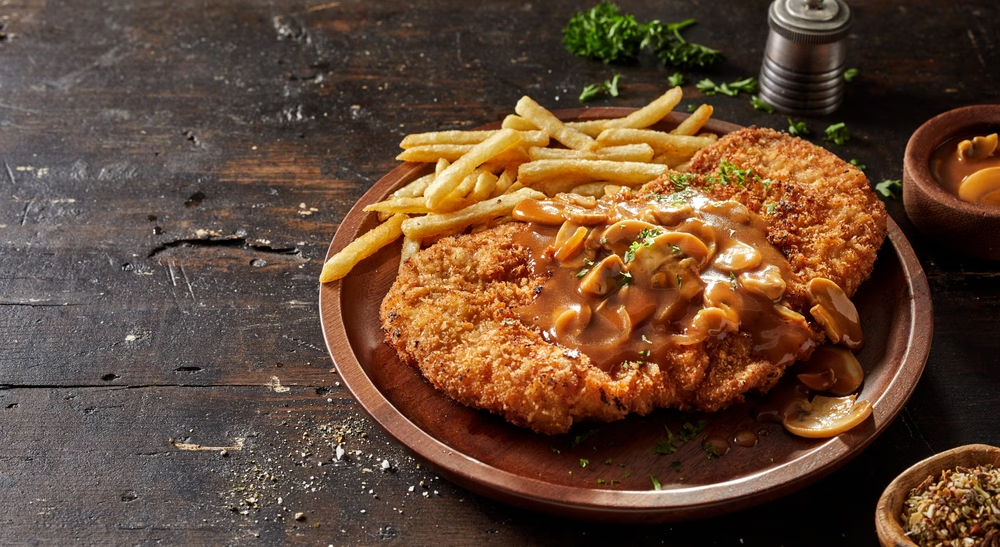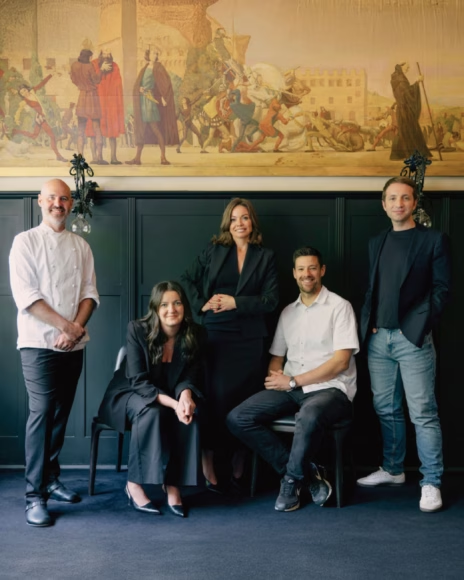Australian restaurants may have a portion size problem that’s contributing to widespread food waste and eating into profit margins, according to hospitality industry experts.
Speaking at Food & Hospitality Queensland, panellists questioned whether the country’s traditionally generous servings still make sense in an era of soaring food costs and heightened sustainability concerns.
“I do find the meals huge,” said Keary Shandler, a sustainability consultant who recently returned to Australia after 25 years in the Middle East. “Is that a cultural thing? Are operators wanting to give good value for money? It’s just a perception that you want to fill this big plate.”
Rod Fowler, Director of Food Industry Foresight, pointed to RSL clubs as a prime example, where chicken parmigiana servings often cover an entire plate. “I rarely finish a meal in those situations,” he said.
The observation sparked discussion about whether Australian dining culture has created unsustainable expectations around meal sizes, particularly as venues grapple with food costs that have risen 20-40% in recent years.
Shrinkflation disconnect
While Australian supermarkets have largely avoided the “shrinkflation” phenomenon seen in UK retail – where package sizes shrink but prices remain the same – the trend hasn’t reached restaurant plates.
“In retail, we’ve got this thing called shrinkflation, where they’re reducing the pack sizes for the same price,” Fowler explained. “But it doesn’t seem to be happening in foodservice.”
He suggested the cultural expectation of dining out as a ‘treat’ may be preventing operators from rightsizing portions, even though Australians now eat out so frequently – spending 39% of their food budget away from home – that every meal doesn’t need to be a feast.
The waste factor
The portion-size discussion ties directly into growing concerns about food waste, with some venues reporting waste rates of 20% to 40%, according to Adam Theobald, Founder and CEO of Ordermentum.
“We’ve seen between 20 and 40% wastage in some of these venues, which is crazy in a world where there’s so much pressure on everyone,” he said.
Shandler emphasised that food waste represents lost money across multiple stages – in preparation, in uneaten meals returned from diners, and in spoilage. She advocates for simple measurement techniques, including using clear bags to collect waste as a visual reminder of the problem’s scale.
Global trends
International trends point toward ‘less is more’ approaches, with smaller plates, diversified offerings, and more carefully calibrated portions becoming the norm in many markets.
“Some of the trends globally are, less is more, depending on what your menu design is,” Shandler said, noting this doesn’t mean compromising on quality or value, but rather focusing on diverse, nutritionally balanced offerings rather than volume.
Financial sustainability first
The panellists acknowledged that addressing portion sizes requires careful consideration, as operators must maintain perceived value while managing costs.
“You can’t follow all these sustainability and environmental behaviours unless you’re financially sustainable first,” Fowler cautioned. “You’ve got to have a financially sustainable business to then focus and do all these things right.”
However, with food costs continuing to rise and waste representing a significant drain on profitability, the conversation around portion sizes may become unavoidable for Australian operators seeking to future-proof their businesses.
As Theobald put it: “I think the time is now to get on top of this, both personally and otherwise.”







